- You are respectively the Artistic Director (Hasham) and Executive Producer (Merican) of Kuala Lumpur Performing Arts Centre (klpac) and, at the same time, running your own theatre company called The Actors Studio. Can you tell me the relationship between these two institutions?
- Joe Hasham (hereafter JH): At klpac, The Actors Studio has two partners, which are the infrastructure conglomerate YTL Corporation and a foundation for charity, Yayasan Budi Penyayang. These partners have nothing to do with the management of klpac, while The Actors Studio is solely responsible for managing the arts complex. All staff members are selected and appointed by The Actors Studio.
Faridah Merican (hereafter FM): Yayasan Buni Penyayang is on the board because of our patron, the late Datin Seri Endon, who headed the foundation. She was a wife of Tun Abdullah Ahmad Badawi, who was the Prime Minister of Malaysia when the theatre opened and she is still our patron, spiritually. YTL is a company that developed the area surrounding klpac and supports the theatre financially. YTL set up a board of directors for klpac, and Joe and myself are on the board as well. It is a very comfortable kind of partnership because they do not interfere [in the Centre’s operation]. - Then let me start with questions about The Actors Studio. It was established in 1989 as a theatre company, and later you opened your own performance space. Did you intend to set up a venue from the very beginning?
- JH: Yes, we did. It was because of Faridah’s mentor, an American theatre practitioner by the name of Joy Zinoman. When we were setting up a theatre company — it was about the same time as we got married —, we visited Joy, who owned her Studio Theatre in Washington. We were so inspired by her theatre that we thought, “This is the kind of thing we want!” Thus we started in earnest looking for a space when we came back.
The first space we found was underneath the Dataran Merdeka (Independent Square) at the city centre of Kuala Lumpur. We opened a 153-seat theatre there in 1995. We then added a 90-seat blackbox and our Academy facility with 4 studios. There also was a resource centre where people came to read books on theatre.
FM: And eight years after the opening of the first theatre, which was in 2003, we lost all of our facilities because of the flood that hit the city centre of Kuala Lumpur. Luckily, however, we had another venue in a different area of the city by that time. We were approached by a developer who owned a shopping centre in the Bangsar area, which was known as a hip and fashionable suburban area of Kuala Lumpur, around 2000. They offered us a space which once had accommodated two little cinemas but they had been vacant for 18 months. They asked us, “Would you like to set up a theatre here?” And we said, “Certainly.” So we designed The Actors Studio@Bangsar Shopping Centre and opened it in 2001. We were not totally devastated by the flood thanks to this theatre, although it was so heart-breaking.
JH: We also had a small theatre in Penang called The Actors Studio Green Hall, which was opened in 2002. - What was the situation of Malaysian theatre when you started The Actors Studio in 1989? Where did you perform?
- FM: We performed in different places in Kuala Lumpur. It made us feel very, very frustrated because it was difficult — almost impossible — to set up plays properly in community halls and government-owned venues whose availability was quite unpredictable. We produced 2 or 3 major productions a year during our early years, but we could not guarantee when our shows would be presented.
JH: But, it was a time when we started collaborative works with other theatre companies like Five Arts Centre and Instant Café Theatre Company. It was a very exciting time at the same time! - When you opened your first theatre in 1995, was there anything like that in Kuala Lumpur?
- FM: No, not at all. It was the very first privately-owned theatre in Malaysia except a very small venue set up by the Chinese theatre community. Even our friend, the respected director Krishen Jit of Five Arts Centre said; “You are mad! What are you setting up your own theatre for? You can never make it work.” Maybe we were a little bit mad, but we believed that it was the only way we could do theatre full-time.
JH: Also, it was the only way we could nurture the performing arts in this country. The moment we established The Actors Studio at Dataran Merdeka, so many other theatre companies started to come and wanted to do collaborations with us. Of course, we were very willing. We even let them use our space for free. We really opened doors for a lot of new companies. My Dance Alliance, Hands Percussion group, Nyoba Kan Buto dance company, director and playwright Huzir Sulaiman’s Straits Theatre Company, and the highly popular comedian Harith Iskandar’s Happy Hours stand-up comedy series, all started there. It was a time when Malaysian theatre started to bloom. I think the existence of that venue facilitated it and enabled theatre to really grow. - I feel that things at the first The Actors Studio at Dataran Merdeka must have developed in a very organic way.
- FM: Yes, it was like a home. People felt at home there. People felt the space belonged to them. That was why the artists were very upset when the flood destroyed it. Everybody was deeply shocked.
- But it was, at the same time, the beginning of klpac. I heard that the project started, in a sense, in response to the flood.
- FM: After the flood, we were all wondering what we would do next. We were covered in newspapers a lot. Tun Abdullah Ahmad Badawi and Datin Seri Endon, who had been friends of ours, saw the articles. Other friends in the industry, such as architect Ng Sek San also heard the news. He was instrumental in setting up klpac — one day, he telephoned us and said; “There is a space in Sentul. You must come and see it.” The Sentul area did not seem to be an ideal location for setting up a theatre, but he still insisted that we come. So, 10 days after the flood, we came to this place. It was a place which once had been owned by Malayan Railways Limited (KTM) but had been bought up by YTL Corporation. Sek San was in charge of designing a park there. He showed us all the buildings built by KTM. We just could not believe our eyes. We could not believe that there could be a place like that in the heart of Kuala Lumpur. It was so perfect because the building we saw, which had been a depot, was pillar-less.
We immediately decided to write to the Managing Director of YTL, Tan Sri Francis Yeoh. Tun Abdullah was also very much on our side and said to us, “This is a perfect place for you.” We designed the arts center and presented it to Tan Sri Francis and his board members. He looked at us and said, “Go for it.” He knew it was a good move, as his company was building apartments and houses all over the area. We were blessed to be helped by so many people.
Although we prepared the design concept, the actual planning was done in collaboration with YTL’s architect. It worked well and we could complete the building within 18 months. We opened the doors to the audience on 9 May 2005. Next year is our 10th year anniversary. - klpac is on a totally different scale from your previous venues in terms of size, structure and organization. Did you get any support from the government? What is your relationship with them?
- JH: Our relationship has improved a lot. We have developed a mutual trust with the officers in charge of arts and culture. I think they could help us more — financially in particular — but they did support us whenever they could.
FM: At the same time, we are observing a new trend in the government support. Some organizations, such as My Performing Arts Agency (MyPAA) and Kakiseni.com, are starting to become like middle parties for the Ministry of Tourism and Culture, and disseminate the funding from the Ministry to theatre practitioners. At the moment, we still write to the Ministry directly because we do not know whether these new parties will look after us in the same manner as the Ministry has been doing. We should observe the developments carefully. But, we appreciate the Ministry’s help and it is clear that we are on their side.
JH: From the very start, we have been stating that, “We are not theatre activists. We are theatre practitioners.” There is nothing wrong with being theatre activists, but that is not our mission in life. What we want is simple: nurturing theatre in Malaysia. - In terms of design of the arts complex, what were the elements you kept in mind particularly?
- JH: One unique design is the location of the workshop for building sets and props. It is located at the front of the theatre and its walls are transparent. So visitors can see the things we make there and how we build them. They will see that things do not happen miraculously.
FM: When we designed klpac, we told the designers that we wanted to make it a bigger reconstruction of The Actors Studio at Dataran Merdeka. And, that is why we have similar facilities here — a resource center, studios and theatres. We wanted the new space to reflect what we had before in the destroyed space. Of course, the scale or the premises is totally different, though.
JH: And we have as many as nine studios. Having had a little bit of experience, we knew that our performing arts center could not be without studios. We need them for rehearsals, of course, but we also need them for the Academy. The studios, located on levels 2 and 3, are around the shell of the main theatre. - klpac is not only a venue to stage performances, but has also been a platform to nurture young talent, as you mentioned. The Academy has existed from the days at the basement of Dataran Merdeka. What do you feel it should be instrumental for? How and why did you start it?
- FM: We actually started classes even before opening our first theatre. We had classes at the old National Arts Gallery’s Creative Centre Building, which has now become the Majestic Hotel.
JH: We also had classes at dancer Ramli Ibrahim’s studio, as well as the prestigious Commonwealth Club. The reason why we started the Academy was that we really realized that nothing very much was going to happen if there was no education in theatre. Back then, there were very limited opportunities to study performing arts in Malaysia. However, only a few people could afford to study abroad. Schools often did not offer arts programs and the universities were not heavily devoted to the arts either. We wanted to do something in this regard, and we did. - What was your original intention in establishing the Academy? Did you want to nurture professional performers who could perform in your productions? Or did you target the general public?
- JH: It was a combination of both. But nurturing the performers was not necessarily meant for our own shows. Of course, we sometimes cast those who had done the classes with us in our shows, because we were familiar with them. But, it was not a criterion.
FM: We just wanted to give them the possibility of learning some of the skills of drama, dance and music. We realised that our education and schooling system in Malaysia did not cater for the performing arts. The problem became serious after I left school. In my time, the situation was quite different — literature, drama and arts classes were taught in schools. But, when we started The Actors Studio, there was nothing. Nothing to help the students to develop their creative skills.
It was fortunate that Joe came from a background with NIDA, Australia and could impart his knowledge to our students. If we did not have a trained person like Joe, it would have been difficult to teach. He developed those who would become our teachers later — Mark Beau de Silva, Christopher Ling and many others. - How is the current Academy operated?
- JH: We have seven people looking after the Academy at the moment. They are permanent staff members. We have many part-time teachers as well. Our average intake every semester is 2 to 300 students. We have three semesters a year and, on top of that, intensive holiday camps, which are quite popular. Thus, our total number of students is well over 1,000 a year. If we had any sense, we would stop doing theatre and just run the Academy!
- Who are your students now?
- JH: Our students range in ages from three to 75. We have teenagers, adults and seniors too. Our theatre for seniors program has produced a couple of wonderful actors. One of them, who went on stage for the first time [at the Academy], recently won the Best Supporting Actor at our Short & Sweet theatre competition. The Academy is a huge success story for us.
FM: We recently re-branded the Academy. After moving to klpac, it was simply called the Academy @ klpac. We thought, “Wait a minute. There is no branding!” Thus we renamed it The Actors Studio Academy @ klpac, using the iconic name in theatre education in Malaysia. Ever since the re-branding and bringing in our Resident Directors on board, the Academy blossomed, thanks to their dedication and knowledge in teaching.
Before that, we were really struggling to get the students. We now employ more talented teachers, which attracts more students. A positive cycle has been established. We did not bring in teachers by referring to the Who’s Who in the performing arts — we handpicked artists who believe they have something to offer. One of the most instrumental is Mark Beau de Silva, who is also our Resident Director. - The Resident Director scheme should be another important mechanism for nurturing young talents. How many Resident Directors have you had so far? And, how was the selection been made?
- FM: Mark, Christopher Ling, Helena Foo, Gavin Yap, Kelvin Wong, Omar Ali… We have had about seven Resident Directors.
JH: The selection process is not fixed. For example, Mark was our immediate choice because we had known him since he first started his career in theatre. We watched him grow as an artist. He is a wonderful director and a great writer, too. He also had experience in teaching theatre at a university college. We made him an offer and, thankfully, he agreed to join us.
In regard to someone like Omar, he had been involved in performing arts only for three years when he joined us. But, he had proven himself as an actor over and over. I had directed him in many productions and found he had wonderful skills. We employed him on faith.
FM: Christopher Ling came to us. He was working at a church, looking after the drama section there. We had known him since he was a schoolboy. He later set up his own theatre company with his friends and they staged productions at The Actors Studio at Dataran Merdeka. So, when he decided to leave the church to pursue his artistic career, he came to us and asked about the possibility of working with us.
JH: Kelvin was a very interesting young man with a lot of artistic talent. The only thing he lacked was administrative skills. We liked his creative skills and thought we could support him in terms of administration, thus we invited him in. Helena Foo first came to us as an intern. Our relationship with these Resident Directors was also developed in a very organic way. We do not sit down and strategize — we do not consider any paper qualifications. - What are the responsibilities of the Resident Directors? How does the scheme work?
- JH: We normally give them a target of three productions a year, which is on the high side. We mentor them, but make it clear that we do not interfere with their creative decisions. We just advise them. Unless it is something crucial, I, as an Artistic Director, would not tell them, “No, you cannot do that.” I said so only when I found that a young director made a choice of a production without knowing what it would entail. They did not know the difficulties they would face with that production.
On top of directing productions, Resident Directors’ responsibility is also in passing on their knowledge in the Academy. Even after their contract is finished, we usually maintain our close relationships with them.
FM: In terms of the productions, we encourage them to tackle the challenges. However, we need to guide them at the same time, especially in terms of budgeting and planning, which the young directors are not very experienced in. One of the biggest problems of these young creative people — of course, there always are exceptions — is their lack of administrative qualities. We are helping them to develop that kind of sense and skills, too. - But that is why there are people called producers, isn’t it?
- FM: We do not have too many producers in Malaysia. Producers are not easy to employ. There is no course to train producers offered in colleges or in other institutions [in Malaysia]. I sit on the advisory board of one of the collages that offers courses in the performing arts, and we once touched on the subject of producers, production managers and stage managers at a board meeting. The school said, not too many students want to adopt these as a profession — they want to be an actor or a director. So, we advised that the school should channel their study or discipline into saying that producers can also earn. They can earn quite a good salary if they are good. There already are some production people who have been paid well in the industry. I have to admit that being a full-time producer or stage manager is not an easiest thing to do, though. Right now, we have one full-time stage manager at klpac. He once left us to study further in Australia, but came back after completing those studies.
- Now let me ask about the music side of klpac. You have a strong focus in music, and klpac has its own orchestra.
- JH: Yes, we have klpac Orchestra, klpac Symphonic Band and klpac String Ensemble. The interest was all brought to us by late Brian Tan, who was our first Resident Music Director and conductor. Although he passed away a few years ago, he left these legacies with us.
Although there are a number of music students in Malaysia, many of them do not have the opportunity to play in an orchestra. We will continue to have our Orchestra as a platform to provide them opportunities. The String Ensemble is meant for nurturing players and bringing them up to the standard where they can play in the Orchestra.
The Symphonic Band is a different kettle of fish which is looked after by Cheryl Mah, who works as a Resident Conductor and Music Director of the Band.
FM: All three of these orchestras are community orchestras. Their members do not pay us any money to be trained, and we do not pay them any money when they perform. It is a win-win situation for all of us. The members are interested in playing as long as they have a conductor they can believe in and look up to. Cheryl did not have much trouble in getting musicians. Also, the klpac Orchestra, which is now under Lee Kok Leong, who used to work with Brian, has no problem at all in getting musicians. And the same thing applies to the String Ensemble. Musicians are selected by audition.
We usually have five concerts a year — two with the Orchestra, two with the Symphonic Band and one with the String Ensemble. - How do you programme the events at klpac? Do you have any specific focuses or policies at the moment?
- JH: We generally work to a kind of formula, which can be eventually modified according to the whims of the creative people involved. Basically, we have five musical concerts a year, as I mentioned. I am involved in two major productions — sometimes musicals and sometimes theatre productions. Faridah has her own highly popular Life Sdn. Bhd. theatre series that has focused on capturing Malaysian daily lives. We will continue this project. On top of that, she directs one major production a year. Each of our Resident Directors is given a task of directing two to three small to medium-sized productions a year. Our long-time collaborator Paul Loosley usually directs one or two productions a year on a freelance basis. And the Choreographer in-Residence of klpac, Lex Lakshman Balakrishnan, stages a couple of dance shows a year. These are the programs produced by ourselves.
In terms of the selection, we do not have any particular theme. Directors come to me with their own choices and suggestions, and we examine them. We ask what the creative content of their productions? Are they feasible for our audiences? Are they manageable in terms of the budget? Again, the process is quite organic.
FM: There are projects brought in by other companies, too. We usually begin the discussions for planning for the following year just after the middle of the year. The decisions cannot be made only with one meeting — we usually have several discussions. We are very fortunate that klpac is an extremely popular venue. There is no magic regarding this popularity. It is because we have strong administrators and capable technical people here at klpac. Even if you are a quite disorganized theatre company, they can help you and even train you to get things done properly. Now, [because of the popularity] the booking of our venue has to be done far in advance. - You are also very active in collaborating with foreign delegations based in Kuala Lumpur.
- FM: Yes. For instance, we are hosting the Latin American Film Festival that will be co-organized by 10 embassies of Latin American countries soon. We have been doing this for a long time — it started even before the klpac was built. We have close relationships with many foreign delegations and often collaborate with them.
I would like to mention that our relationship with the Japan Foundation Kuala Lumpur and the Japanese Embassy has been, and continues to be, a great asset to the performing arts industry of Malaysia. Of all the foreign countries, Japan has been the most prolific [in terms of activities], I would say. - klpac is a private institution, yet because of its scale and presence, it inevitably has some public aspect, I would guess. From the programs of klpac, I sense your commitment to the community.
- JH: I think a balance is very important. We try to achieve a balance between the artistic merit and the community outreach. Sometimes we produce shows to which the general public would respond, “What on earth is this?” Other times, we produce something meant for general public, which the real theatre practitioners might consider valueless. You cannot please everyone all of the time. This does not mean we are taking the middle road. We never compromise. If we are doing something artistic in its creative intent, we do it unabashedly. If we are doing something commercial for the public, we do it with sincerity.
We have gotten diverse responses to our programming — some said, “Why don’t you do more commercial theatre works?” We would respond; “But it is not what we are about. We want to nurture the performing arts in Malaysia.” Performing arts come in all different ways, means and colors — the diversity is the key, and Malaysia has great diversity. The performing arts should be a combination of everything, and we are a performing arts centre. Our outlook has to be that broad. - I have noticed that a number of small theatre venues are emerging in Kuala Lumpur with specific focuses. For example, PJ Live Arts focuses on children’s theatre and comedies. How do you feel about this trend?
- JH: Yes, we have got so many new private theatre venues such as the Damansara Performing Arts Centre (DPAC), a white box at Publika shopping mall and KuAsh Theatre in the residential area of Taman Tun Dr Ismail. They are lovely little spaces where people can do specific works. We believe that we are somehow responsible for that. It is really wonderful to know that!
FM: As I mentioned earlier, there were no privately-owned theatres when we opened The Actors Studio theatre in 1995. Joe and I considered it a stepping stone. We kept saying; “We must never stop with just one theatre. We must encourage more and more theatre spaces to be set up. The size doesn’t matter. They can even be studios.”
JH: Having said that, we also realize that klpac has to be diversified as I mentioned. There are so many little niches that cannot be accommodated in these specialised venues, such as Buto performances, classical ballet, experimental contemporary dance and edgy theatrical performances. We once hosted live concerts of the underground rock bands as well. We have to provide them a venue to perform. - In 2011, you opened the Performing Arts Centre of Penang (penangpac). Does it follow the klpac model in terms of management and programming?
- FM: Absolutely. The model of klpac has been proved to be very successful. The penangpac also has a focus on music, for example. It has its own choir group and is about to start an orchestra. Maybe we have to say that our success is rather in terms of creation than in finance, nevertheless. We still rely heavily on our sponsors. It is quite difficult to run these large-scale arts centers on our own. And the sponsorship allows us to bring up our creative products. The situation in Penang is a bit tougher than in Kuala Lumpur and we cannot produce big Penang shows because of the lack of sponsorship. We depend a lot on collaborative works as well as outside productions at penangpac at the moment.
JH: We are fortunate that we have some friends who believe in us in Penang. We can feel that the people in the northern region, which includes the state of Penang, are very proud of penangpac. It is something comparable to facilities around the world. And there is a momentum in Penang. The remarkable achievement of the annual George Town Festival is one of the reasons.
FM: We are trying to get more support from the state government as well. In Malaysia, unfortunately, you cannot do anything without the help from the state governments or the federal government. They have money and an allocation for the arts and culture. - To conclude the interview, I wish ask you about the challenges. What do you think are the challenges of Malaysian theatre at the moment?
- FM: There has always been a concern that it is so politically connected. If the politics of the country did not appreciate the performing arts, the performing arts would be ruined.
JH: I think the real challenge is getting the authorities to acknowledge the fact that the performing arts are a very important aspect of the country’s growth. It is not a simple matter but an extremely complex issue related to the society, religion, education and many other things. Some groups, for example, consider the performing arts as haram (“sinful” in Islamic sense). We need to address this complexity, which is a big challenge for all of us.
Joe Hasham / Dato’ Faridah Merican
Nurturing theater and music in Malaysia
Kuala Lumpur Performing Arts Centre (klpac)

(left)
Joe Hasham
Artistic Director of Kuala Lumpur Performing Arts Centre (klpac)
https://www.klpac.org

(right)
Dato’ Faridah Merican
Executive Producer of Kuala Lumpur Performing Arts Centre (klpac)
https://www.klpac.org
Interviewer: Ken Takiguchi [National University of Singapore]
Note 1: Examples of klpac productions Broken Bridges, The Musical
This musical was also the inaugural production commemorating the opening of klpac. It premiered in 2006. Set in Ipoh in the 1950s, the play depicts the changes brought on a community by the developments of the Malaysian society. That year it won the Best Music award and Audience Choice award, etc. of the BOH Cameronian Arts Awards. The musical was written by Lim Chuang Yik and Teng Ky-Gan and directed by Joe Hasham. The photos are from the 2013 re-staging.
Photos courtesy of klpac
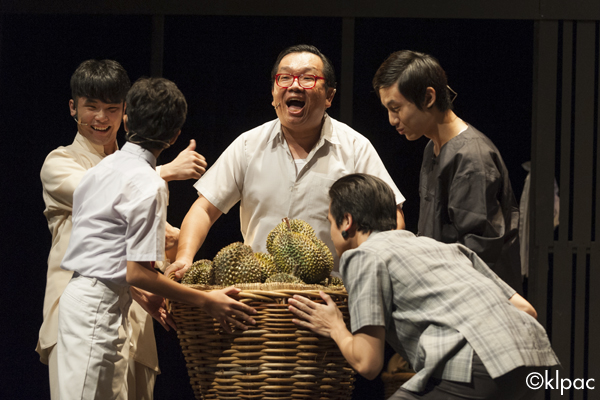
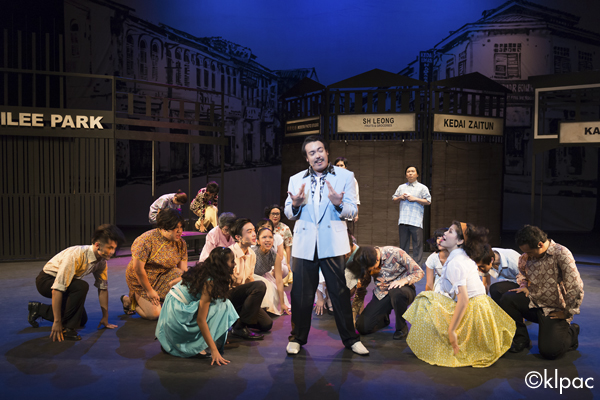
A Streetcar Named Desire
This production re-created the Tennessee Williams play as a dance drama. It premiered in August 2014. With sponsorship from JT International, auditions were held in Japan and Misako Kato of the NBA Ballet Company was selected to participate as a dancer. It was directed by Joe Hasham and Paul Loosley, with choreography by Lex Lakshman and music by Bernard Goh.
Photos courtesy of klpac
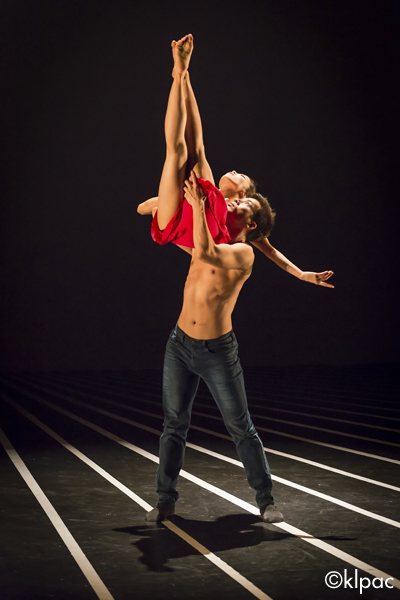
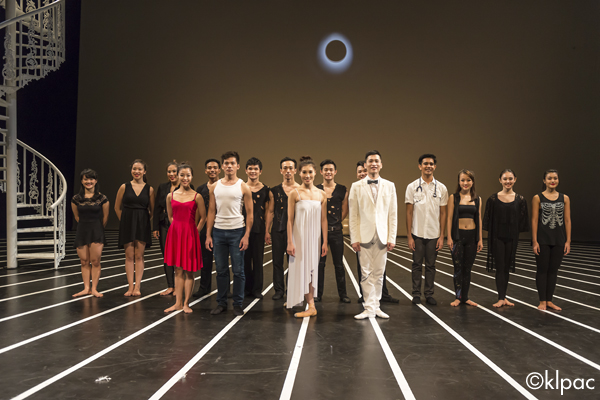
Note 2: Involvement of the Japan Foundation
There is a strong connection between klpac and the Japan Foundation Kuala Lumpur Japan Cultural Centre. In May of 2005, the Malaysian premiere of SHOKU: full version by the BATIK company led by Ikuyo Kuroda , which was sponsored by the Japan Foundation, was performed at the klpac small theater (Pentas 2) as its inaugural performance. The reason that Japanese production was chosen from among the many candidates was a reflection of the expectations for an experimental , cutting-edge work and the relationship of trust that had been established over time. In the following years, other productions from Japan were presented at klpac with high acclaim one after another, including Sankai Juku ’s HIBIKI in 2006, The Strange Kinoko dance company ’s Not Quite Right in 2007 and the Condors ’ Conquest of the Galaxy: Mars in 2009. In recent years, the Japan Foundation and klpac jointly organized the first Southeast Asian tour of Japan’s national Bunraku-Za puppet theater (2013). Also, the cooperative relationship was further deepened when local dancers were auditioned to take part in the production put on by Nibroll (2014). Long-term projects have included the 2007 joint project with the Gekidan Taihen company TAIHEN in Malaysia project that produced a work titled Hutan Kenangan: Forest of Memories . This project was initiated as the result of the meeting of Gekidan Taihen’s Manri Kim and klpac’s Joe Hasham and Faridah Merican when the couple came to Japan in 2003 for the Japan Foundation’s invitation program for foreign culture figures. The couple expressed their desire to see the Taihen Method used with the physically handicapped in Malaysia as it is in Japan to make a theater production, after which Kim held workshops over a period of four years to create a production. Since then, klpac has held projects not only for the physically handicapped but also for other disadvantaged groups in society such as cancer patients and children of refugees, and it was the 2007 Taihen project that served as the initial impetus for these activities.
Photos courtesy of The Japan Foundation Kuala Lumpur
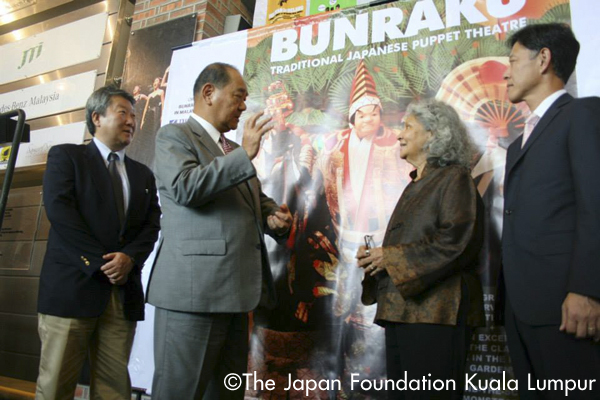
Photos:
Faridah Merican greeting guests at the Bunraku performance
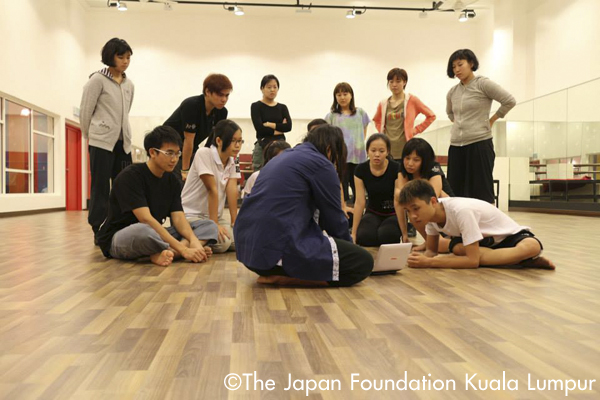
At the auditions held at penangpac
Photos courtesy of The Japan Foundation Kuala Lumpur
Related Tags

